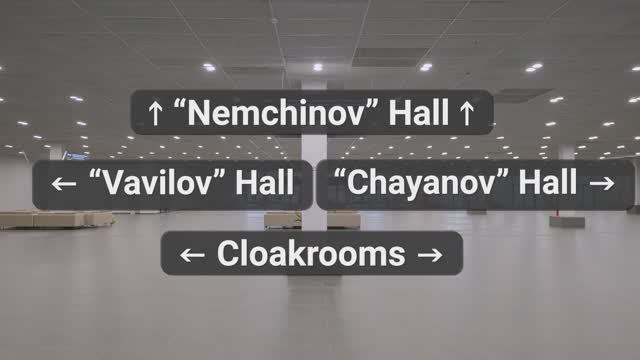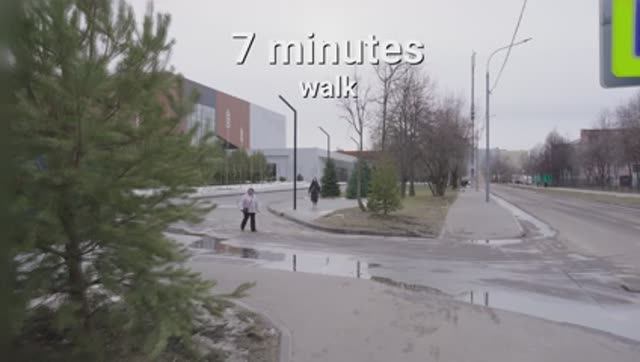Mir Detstva 2025 and CJF – Child and Junior Fashion 2025. Autumn are open
The 30th anniversary edition of the International Exhibition for the Children's Industry – Mir Detstva 2025 and the 33rd edition of the International Exhibition for Child and Junior Fashion – CJF – Child and Junior Fashion 2025. Autumn have opened today at Crocus Expo, Moscow. For the first time, these shows are organised by EXPOCENTRE at an alternative venue.
The anniversary edition of Mir Detstva is Russia’s largest show for the children's industry. It brings together manufacturers, distributors, wholesalers and retailers, as well as representatives of marketplaces. Companies from Russia, Belarus, China, and Uzbekistan will take part in it.
Mir Detstva presents a wide range of products for children, from goods for newborns and toddlers to games, toys, creativity and school supplies, children's furniture, sports equipment, and gifts and souvenirs.
CJF – Child and Junior Fashion 2025. Autumn will demonstrate new collections of companies from Russia, Belarus, China, Kazakhstan, Kyrgyzstan, Uzbekistan, and Vietnam. The show covers all categories of children's fashion, from clothes for newborns and preschoolers to school uniforms and teen clothes, and also includes fabrics and accessories.
“More than 530 companies will take part in these shows," said Maxim Fateev, Director General of EXPOCENTRE. “Within three days, the entire children's industry will be represented on one platform. Thanks to the support of regional business development centers, participants from 12 Russian regions, such as the Republics of Mari El and Tatarstan, Krasnodar and Primorsky Krais, Vladimir, Kirov, Lipetsk, Tula, Tomsk Oblasts, and cities of Nizhny Novgorod and Krasnoyarsk, will present their products. The first pavilion of manufacturers from the Moscow Oblasts is arranged with the support of the Chamber of Commerce and Industry of the Moscow Region.”
This year’s joint conference programme includes more than 40 events of various formats. Visitors will enjoy practical sessions and workshops on new trends in consumer behavior and innovations in offline retail, the licensing potential of Russian animation brands, changes in the safety requirements of children's products, business cybersecurity issues, and much more.
One of the first events of the programme was the Child Safety Congress on Destructive Content in the Children’s Industry: Causes, Challenges and Solutions. It was organised by the Working Group on Ensuring Child Safety, Countering Destructive Ideologies Among Children and Youth of the Russian State Council Commission on Family, the Expert Council on Youth Policy, Culture, Education and Child Safety under the Russian State Duma, the National Project Fund for Support of Educational Initiatives, EXPOCENTRE, with the support of the Russian State Duma Committee on Development of Civil Society, Issues of Public Associations and Religious Organisations.
The congress was moderated by Elena Kalgina, Deputy Chair at the Expert Council on Youth Policy, Culture, Education and Child Safety under the Russian State Duma, member of the Working Group on Ensuring Child Safety, Countering Destructive Ideologies Among Children and Youth of the Russian State Council Commission on Family.
Yana Lantratova, Chair at the Russian State Duma Committee on Development of Civil Society, Issues of Public Associations and Religious Organisations, addressed the participants via video link.
She reminded the audience that the great Russian teacher Anton Makarenko had said that by “raising children, we educate the future of the country and the world.” Today, when there is global competition for whose model of the future is being implemented, we understand more than ever how relevant these words are. Children are literally a reflection of our country. Parenting lays the foundation of a society for decades. Their successes are our victories, but their mistakes are our lessons. Moreover, if we do not protect children from aggressive destructive content, then tomorrow we will face a generation whose values and guidelines will be imposed from the outside.
“Our current task is to unite the efforts of the state, society, and business to protect children,” continued Yana Lantratova. “Destructive content is a challenge, but it is also an opportunity for us to unite the state, citizens, society and manufacturers in order to build a childhood industry that will work not against the children, but for them. We must raise a generation that is proud of its country, its history and culture. And for this, specific steps are needed. From legislative initiatives to educational programmes.”
During the discussion, representatives of government, manufacturers of the children's goods and clothing industry, heads of relevant associations, and psychologists discussed key aspects of the impact of destructive content on children and teenagers. They also talked about legal regulatory mechanisms and the role of the state and civil society institutions in creating a safe environment that surrounds the younger generation.
The shows are open until 19 September.
Press Service, EXPOCENTRE AO



